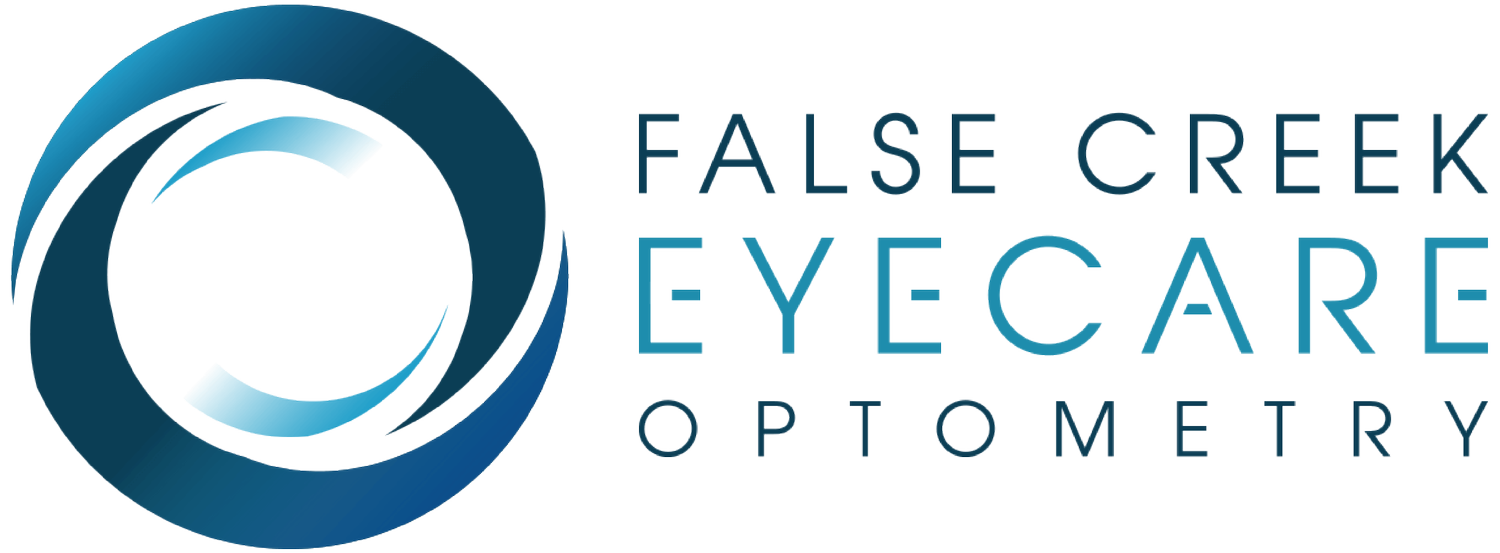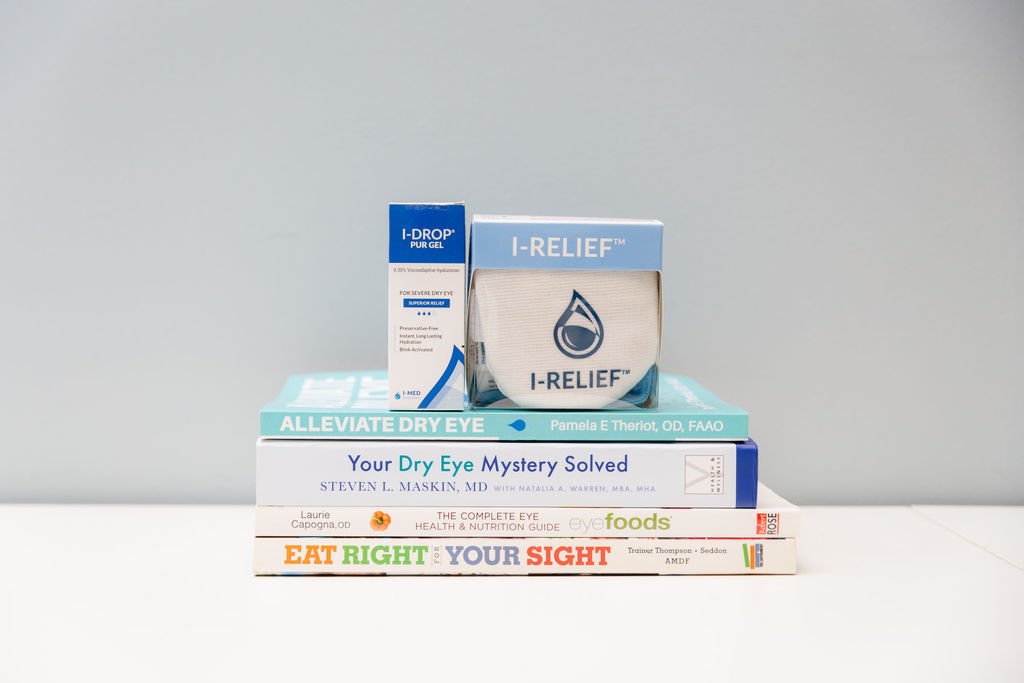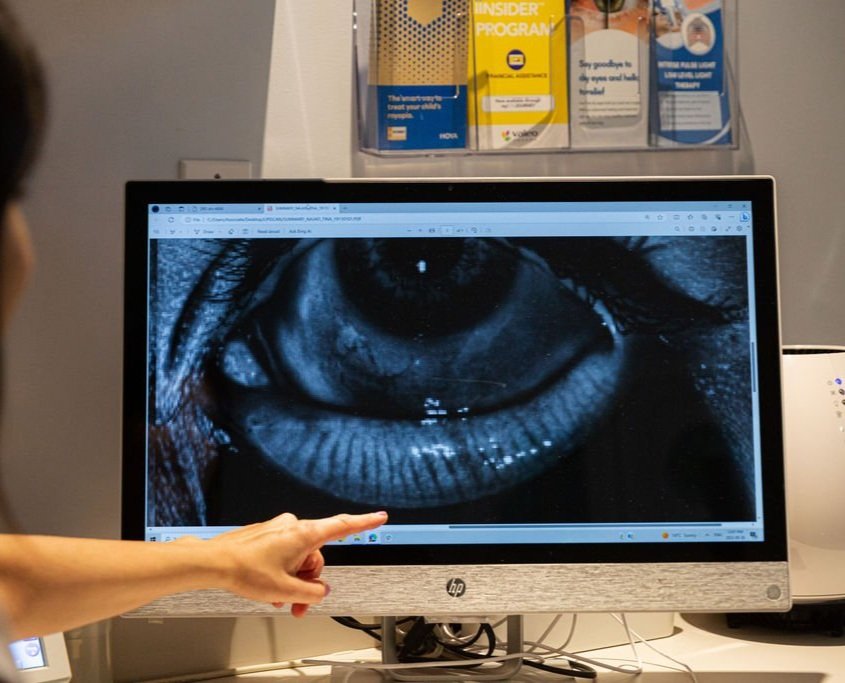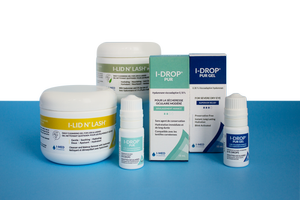
DRY EYE
WHAT IS DRY EYE SYNDROME?
Dry eye is a chronic condition caused by a reduction in the quantity and quality of tears on the surface of the eye.
Tears play an important role in maintaining eye health. They lubricate and nourish the cornea, and provide an interface for oxygen exchange. They remove and flush away bacteria and allergens, preventing the eye from infection. Adequate tear chemistry is also necessary for clear vision, by creating an even and smooth optical surface.
WHAT ARE DRY EYE SYMPTOMS?
Dry, gritty eyes
Redness
Light sensitivity
Eyestrain, worse when on digital screens
Burning, stinging sensation
Heavy, tired eyes
Watery, sensitive eyes
WHAT IS THE MOST COMMON CAUSE OF DRY EYE?
Evaporative Dry Eye, also commonly known as meibomian gland dysfunction, accounts for 80% of dry eye suffers.
Meibomian Gland Dysfunction occurs when the meibomian glands fail to provide enough meibum (oily layer). This can be triggered by various factors and causes the tear film to evaporate at a quicker rate, leading the eyes to feel dry and uncomfortable.
Our tears are made up of three components: the lipid (oil) layer, aqueous (water) layer, and the mucus (sticky) layer. These components work in together to lubricate and coat the eyes, keeping them moist and comfortable.
DIAGNOSTIC TESTING
-
LipiScan is based on patented dynamic meibomian imaging technology to generate high-definition images of meibomian glands. The imaging will allow the optometrists to assess the health of your glands, and to further customize the best dry eye treatment options.
-
Special dyes are placed on the eye to view damaged cells on the cornea, conjunctiva, and lid margin. This aids in diagnosis and helps to visualize the current status of your ocular surface.
-
An electronic diagnostic device for the quantitative measurement of osmolarity (concentration of dissolved salts) of human tears. This is an important tool in monitoring the progress of aqueous-deficient dry eye syndrome (primarily in those with auto-immune conditions and/or Sjogrens).
ADVANCED DRY EYE TREATMENTS
The Equinox LLLT uses a specially designed red wavelength LED light to increase cellular ATP activity in the cells of the meibomian glands. This will release the hardened oils and reduce overall inflammation.
LOW LEVEL LIGHT THERAPY
IPL targets the inflamed blood vessels of the eyelids through controlled light pulses. This significantly reduces inflammation along the meibomian glands, allowing for better production of oils and alleviating the dry eye symptoms.
INTENSE PULSE LIGHT
DRY EYE TREATMENT
-
The Equinox LLLT uses specially designed red wavelength LED light to gently warm up the oil glands in the lids. This will unclog the meibomian glands and release the clogged oils and decrease inflammation.
-
IPL therapy for dry eyes is a non-invasive treatment that uses intense pulsed light to treat meibomian gland dysfunction and reduce eyelid inflammation.
-
Zest (Zocular Eyelid System Treatment) is a treatment that gently exfoliates the eyelids to restore their natural state.
This treatment cleans the eyelid margins and opens up the meibomian gland, releasing oils required for a healthy tear film, which can help alleviate dry eye symptoms.
-
HoCl has proven to be an efficient anti-inflammatory and anti-bacterial agent by way of its dual action, killing the bacteria and neutralizing the inflammatory toxins they release.
-
Chronic dry eye leads to increase in inflammation on the cornea and eyelids. In these situations, steroid eye drops and/or prescription eye drops such as Xiidra, Restasis or Cequa may be recommended.
-
Warm compresses can help unblock the glands that are responsible for produce the oily part of your tears.
Eyelid scrubs remove bacterial and mite overgrowth on the lids and lashes.
-
The properties of the viscoadaptive hyaluronic acid promotes prolonged lubrication and moisture to the tears.
-
Omega 3 is an anti-inflammatory that also aids in the oil production for those with evaporative dry eye. The correct ratio of EPA and DHA will be discussed.
-
Certain antibiotics can reduce inflammation of the glands in your eyelids, allowing the lipid or 'oily' part of your tears to flow more freely. This is not a stand alone treatment, and will be prescribed alongside additional treatments.










